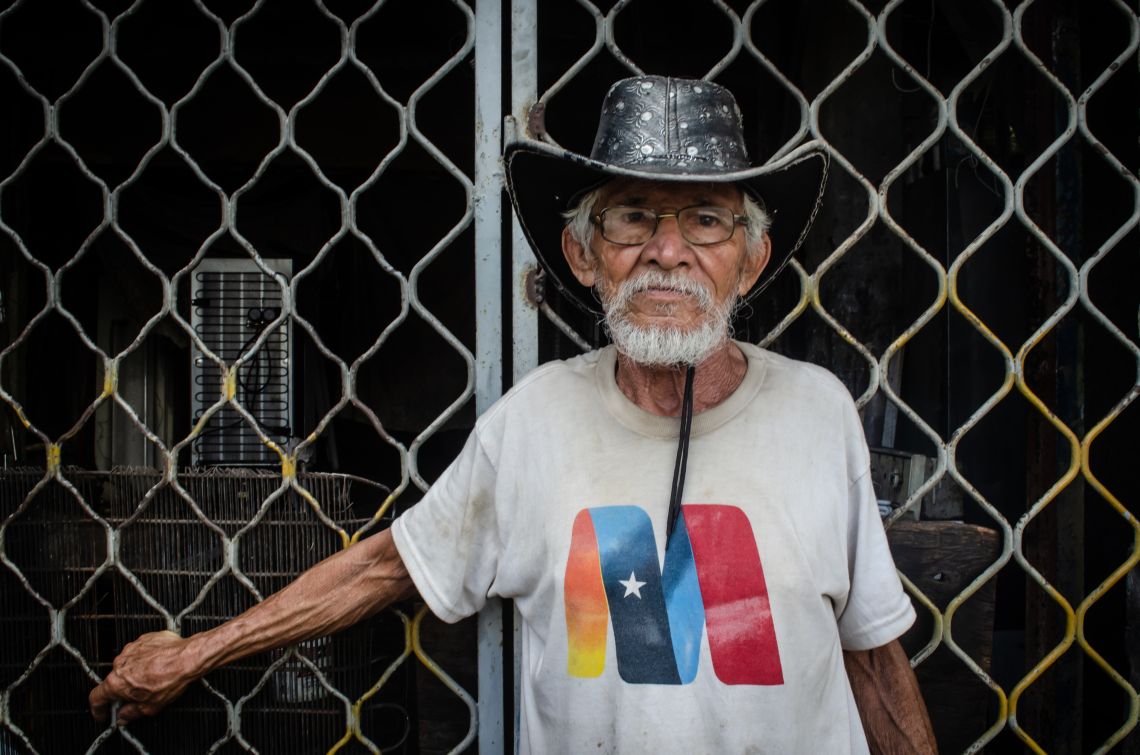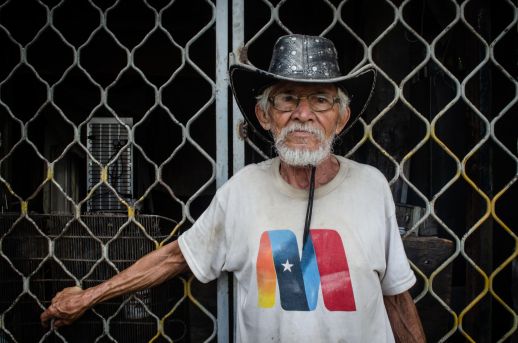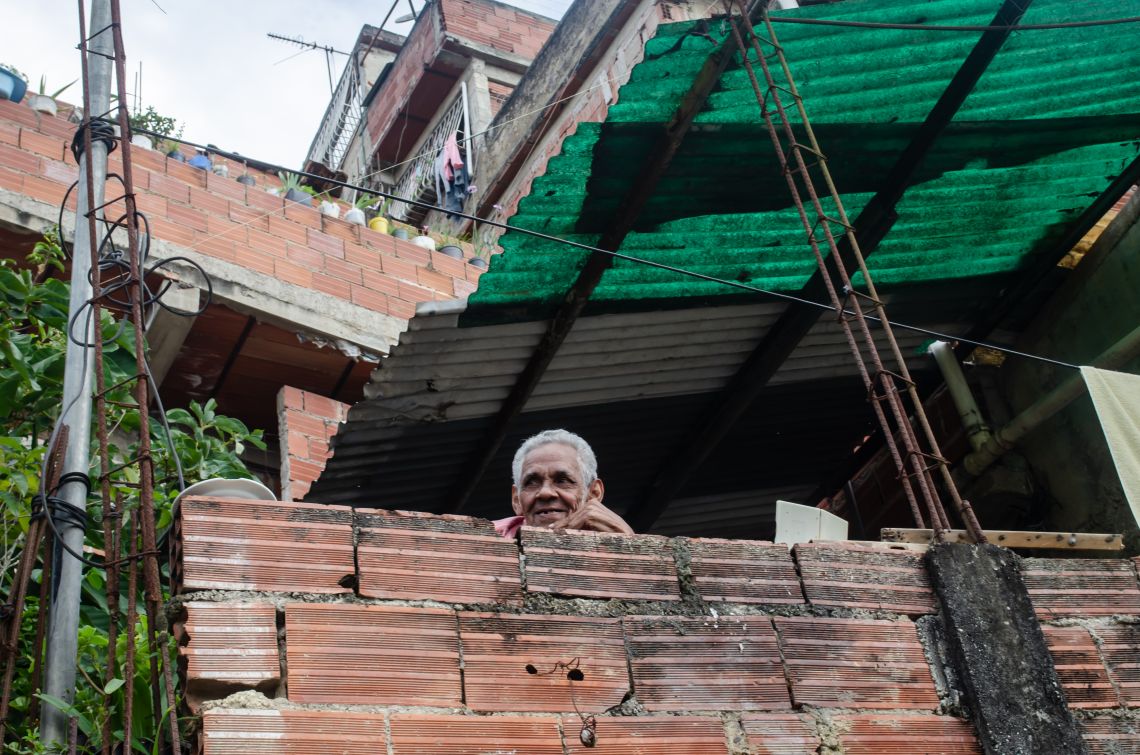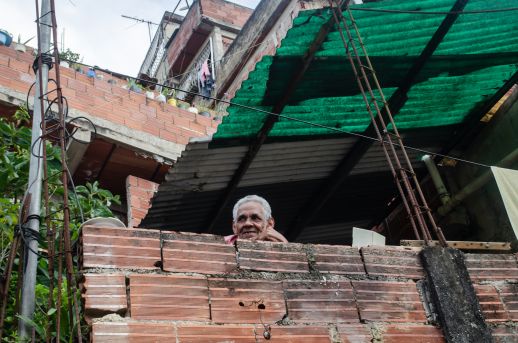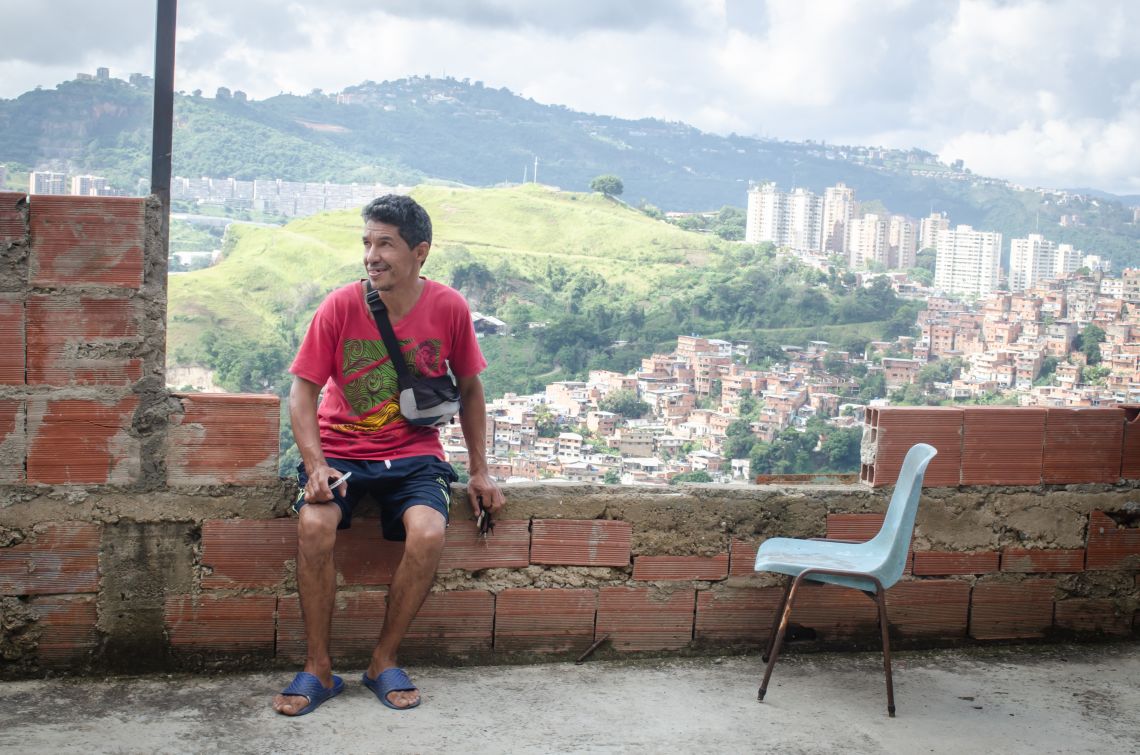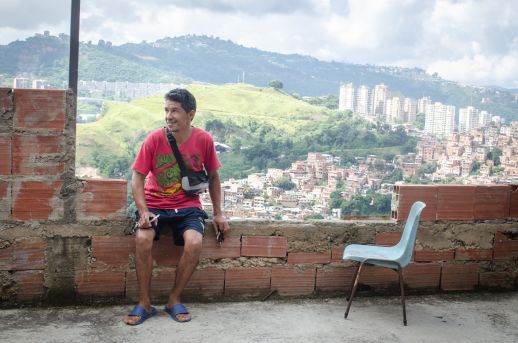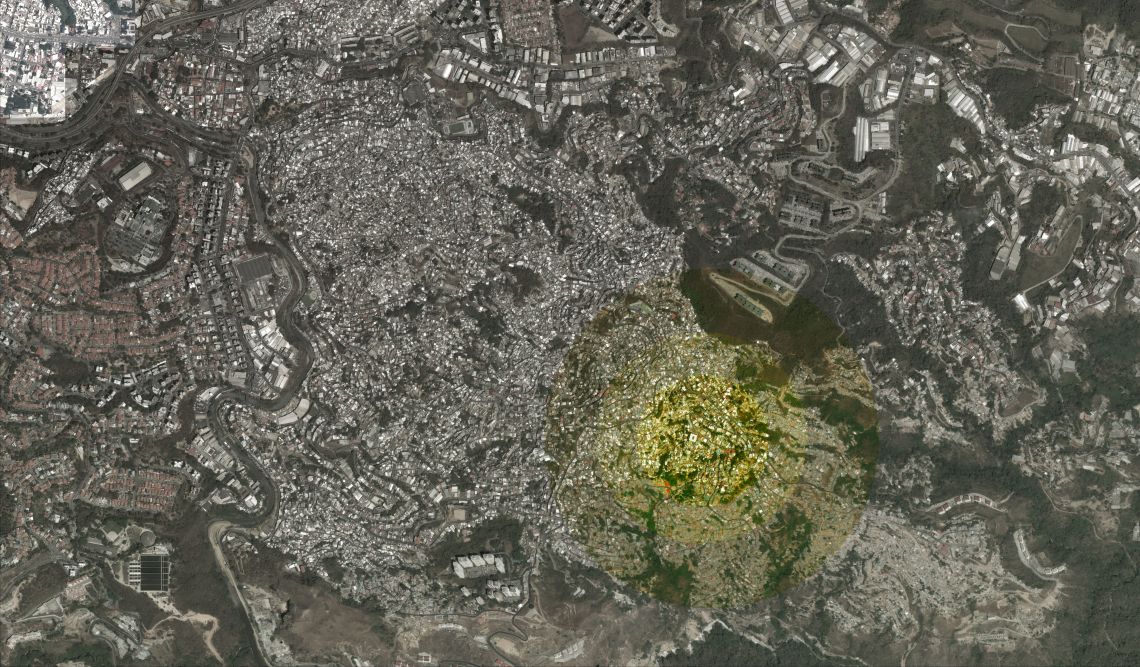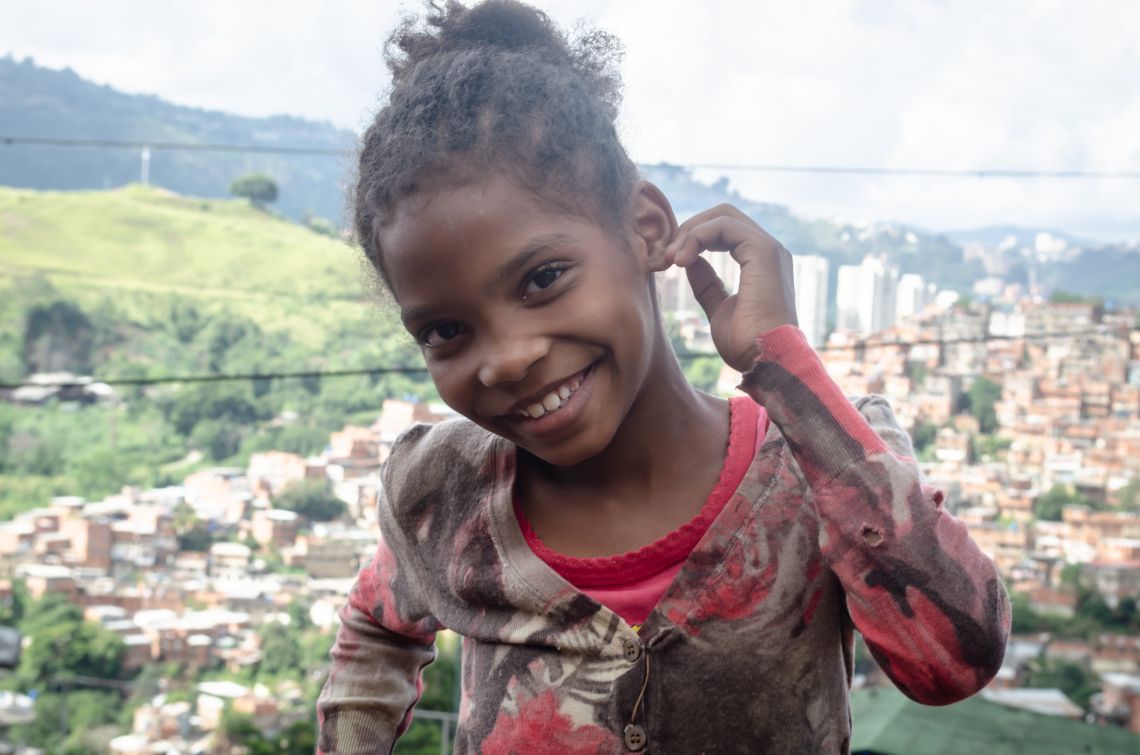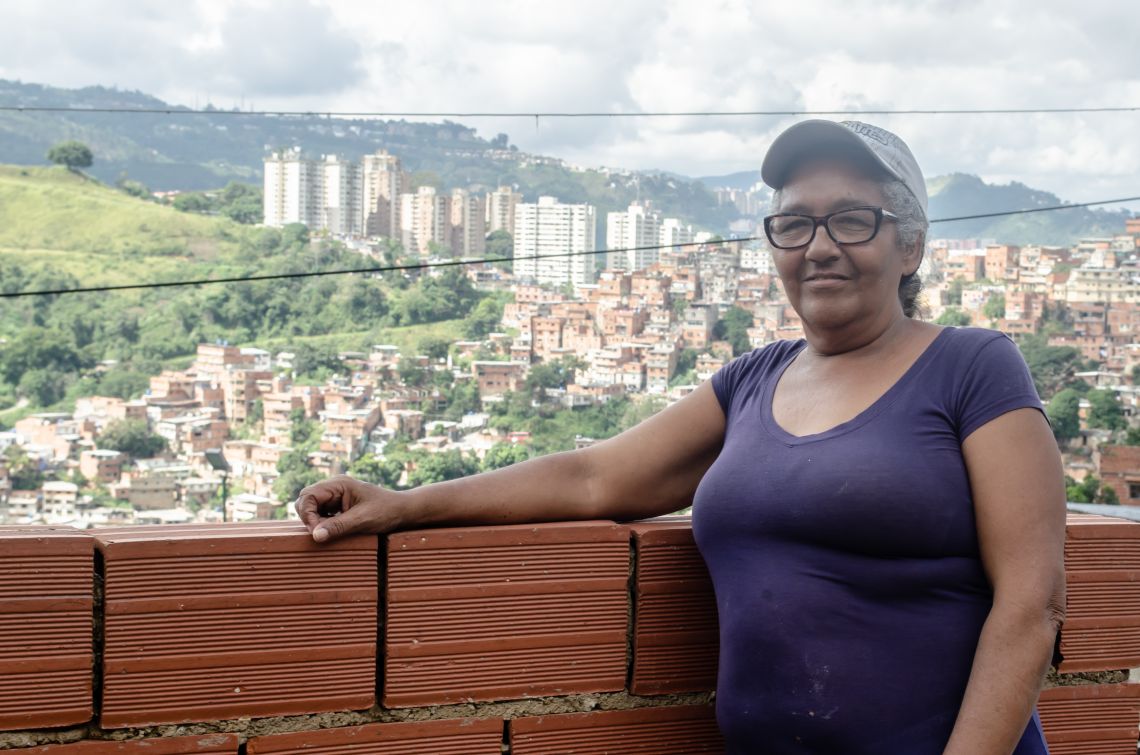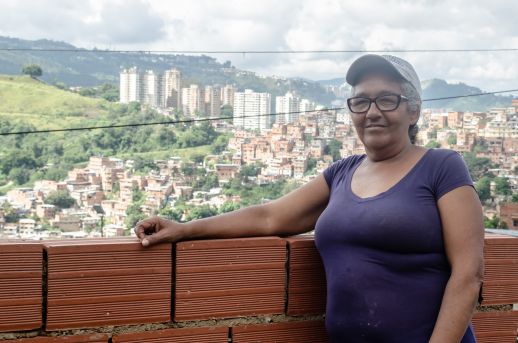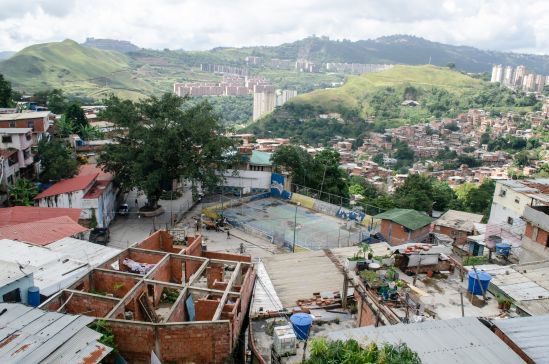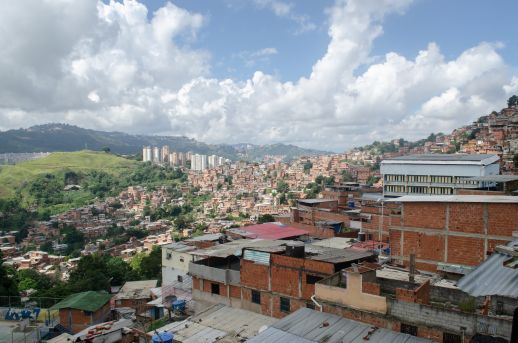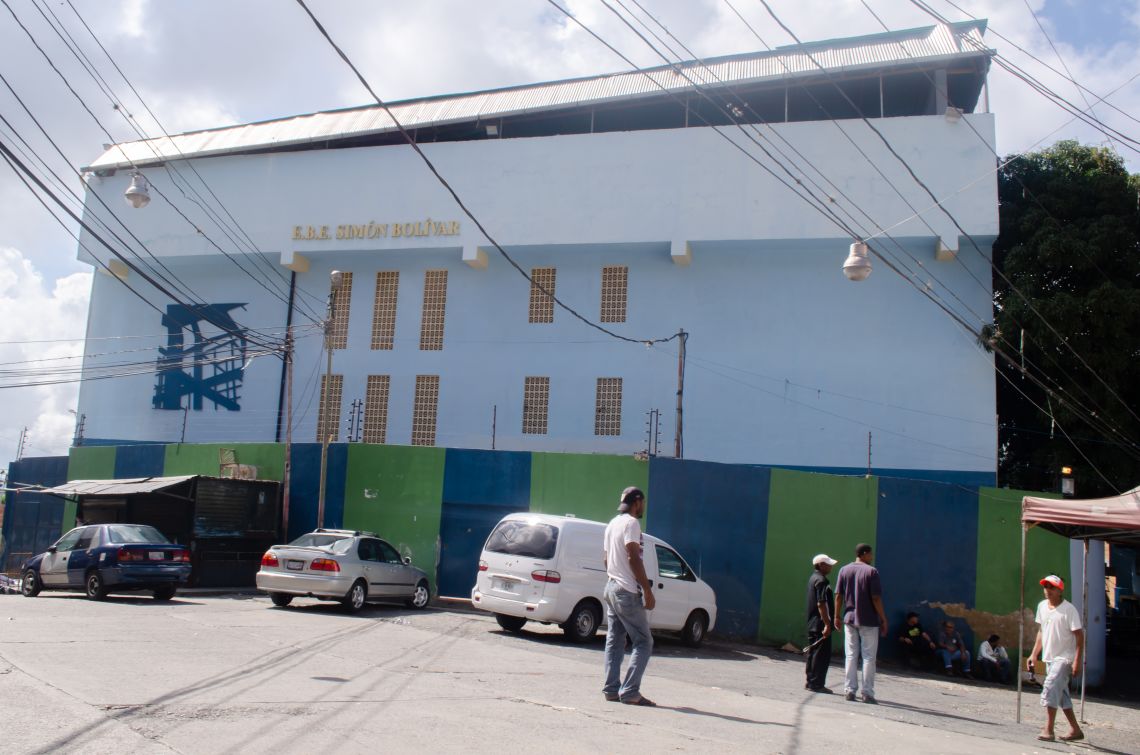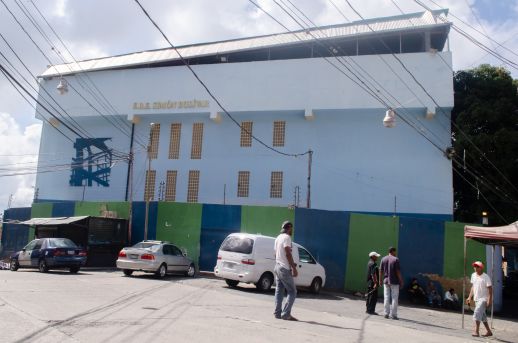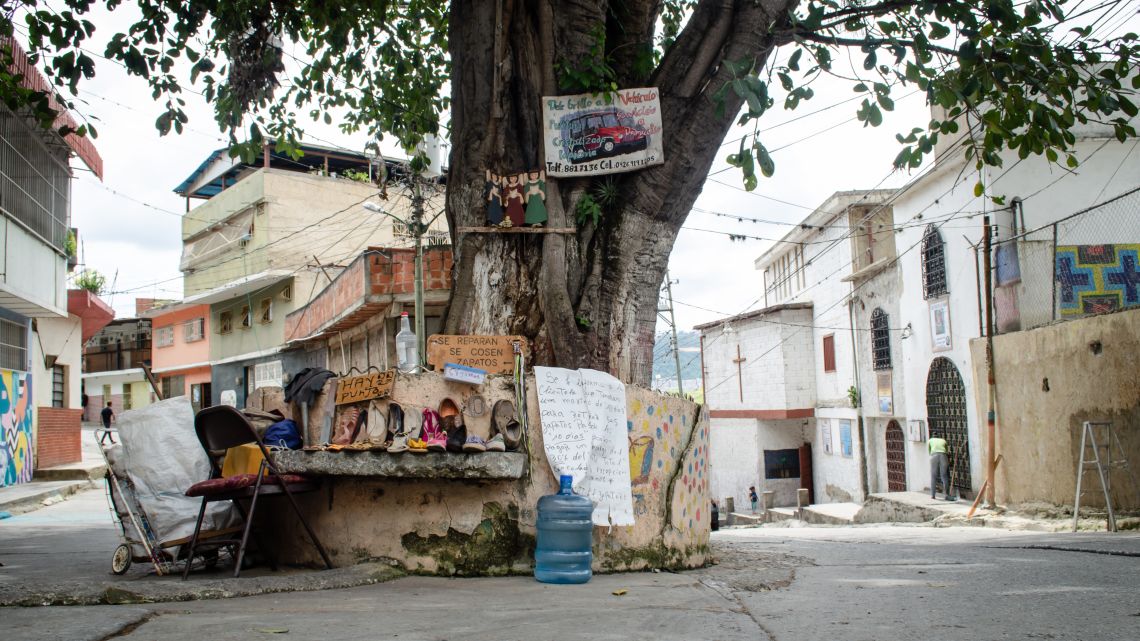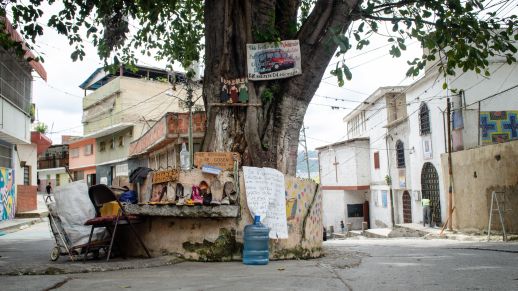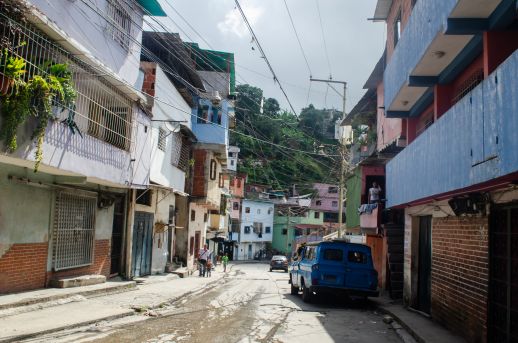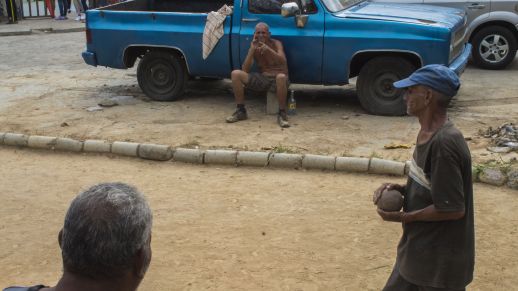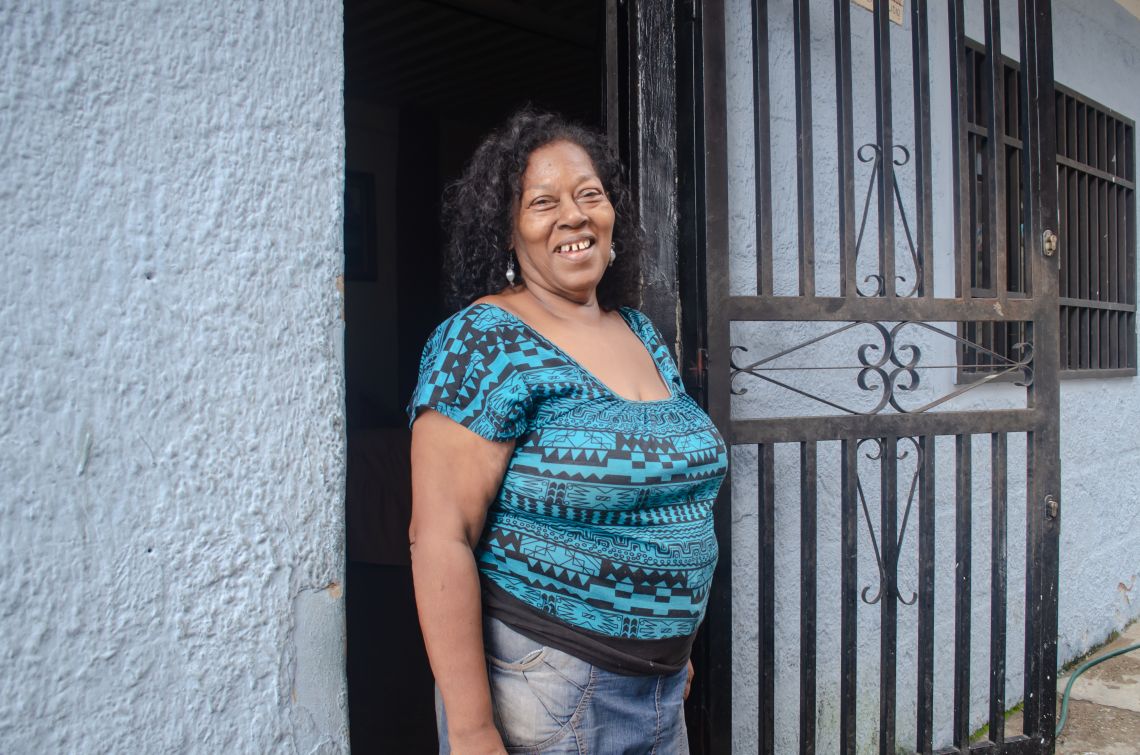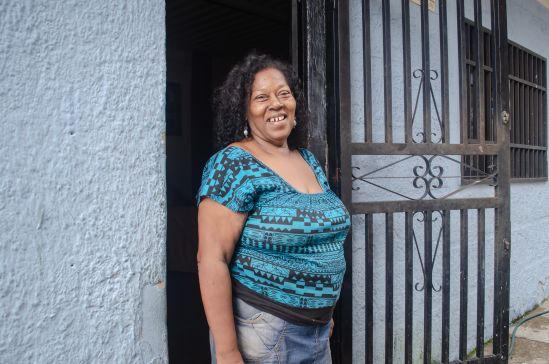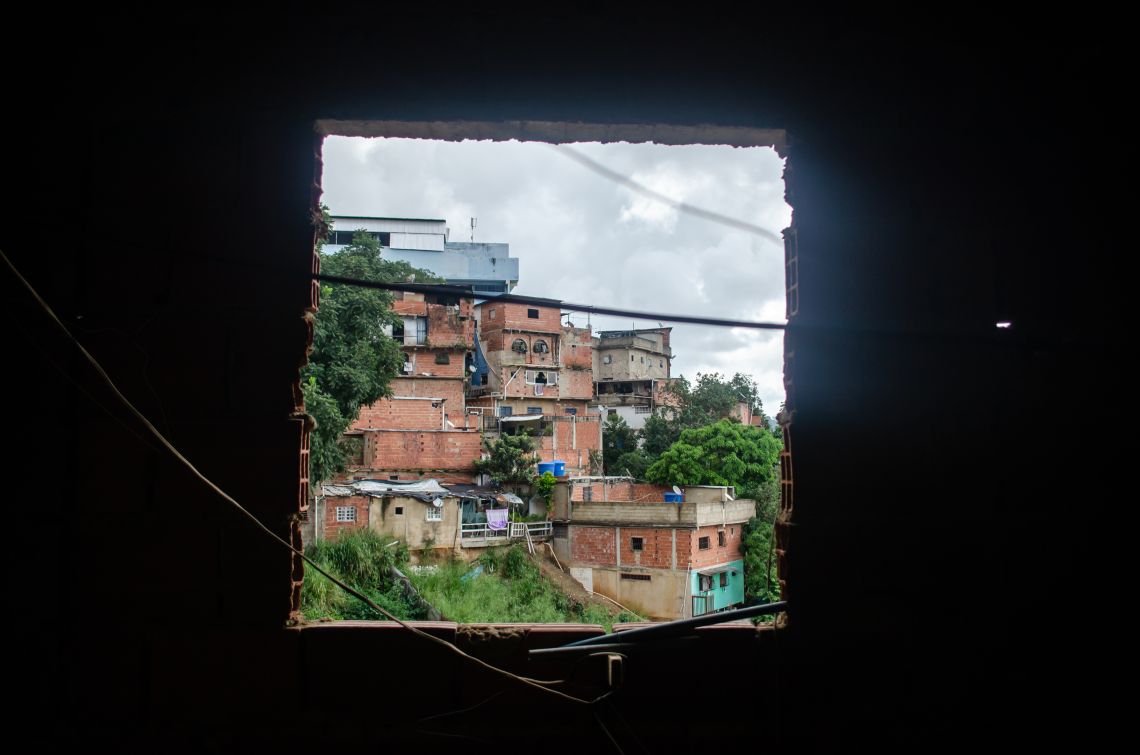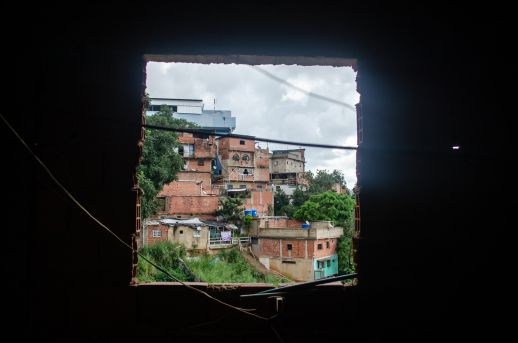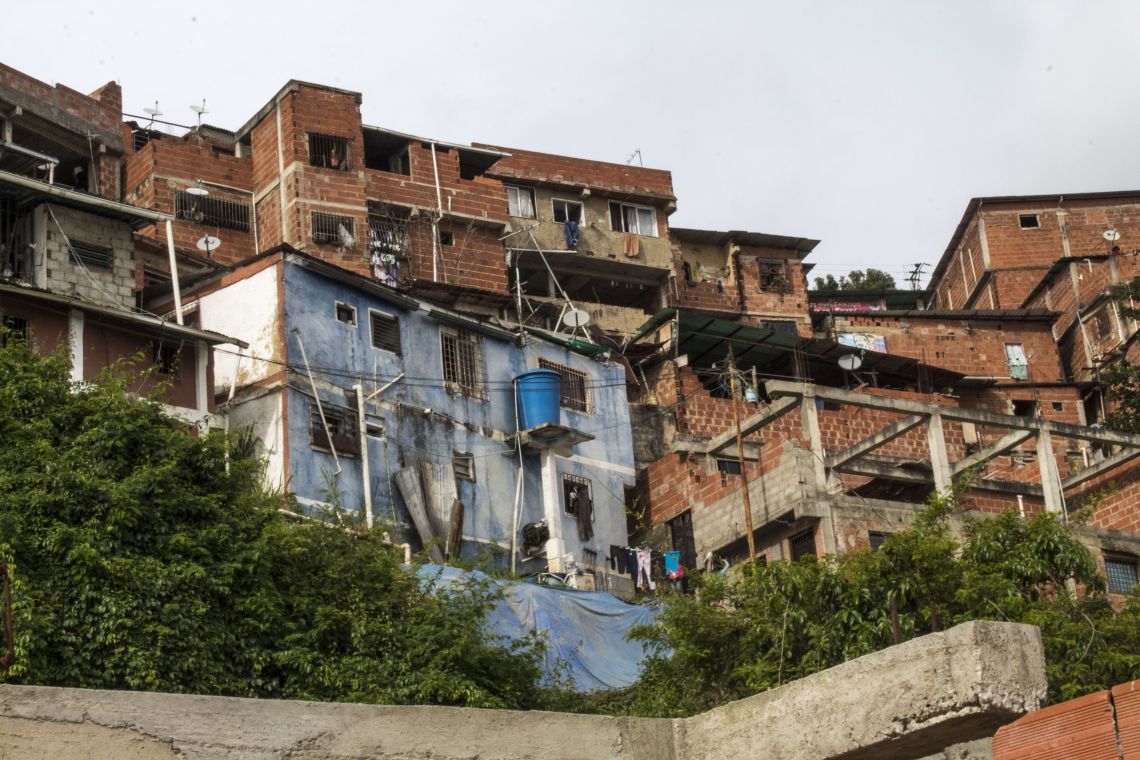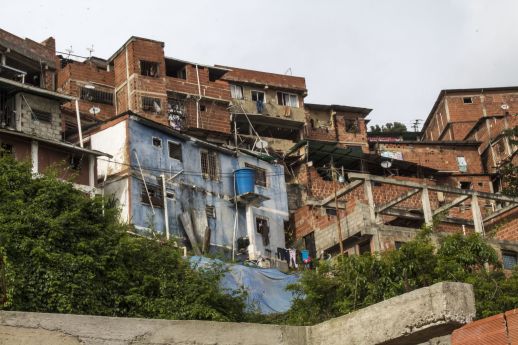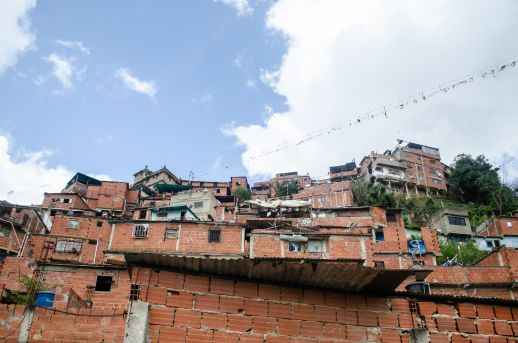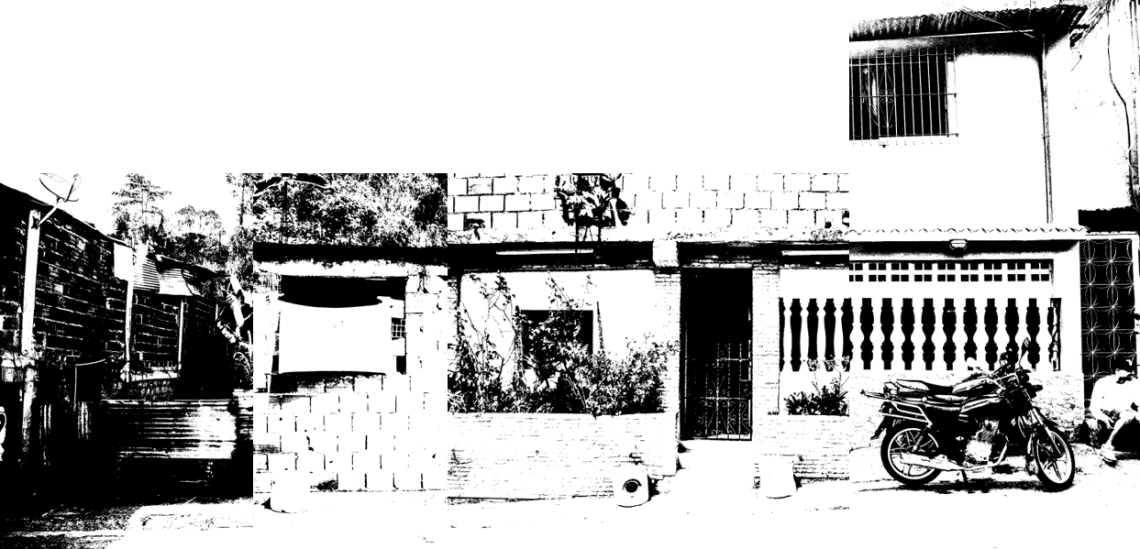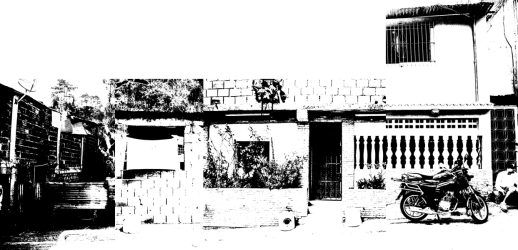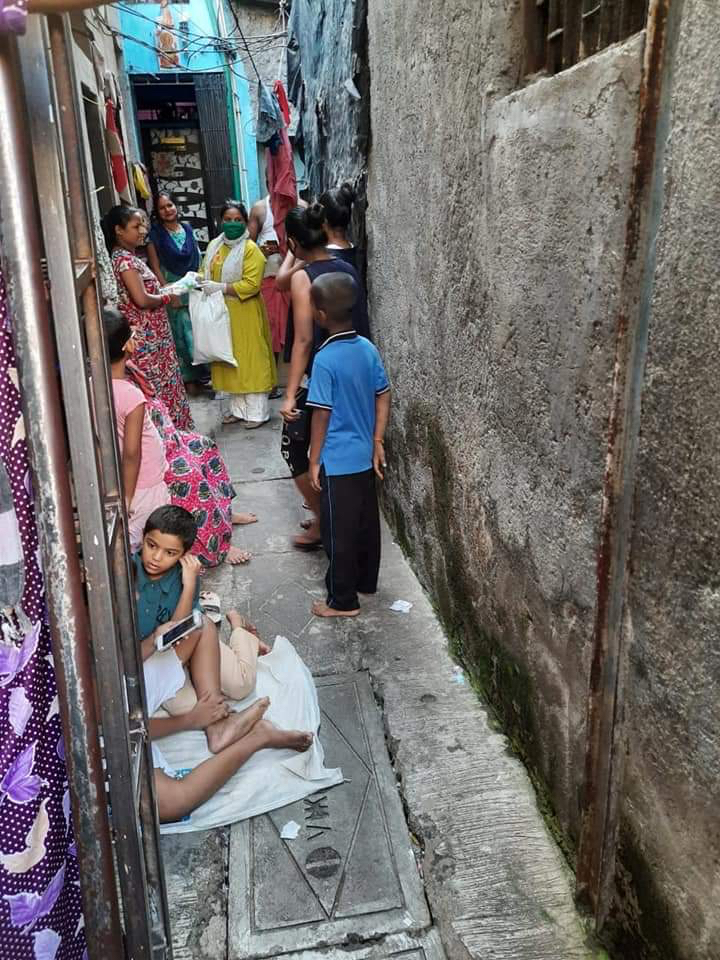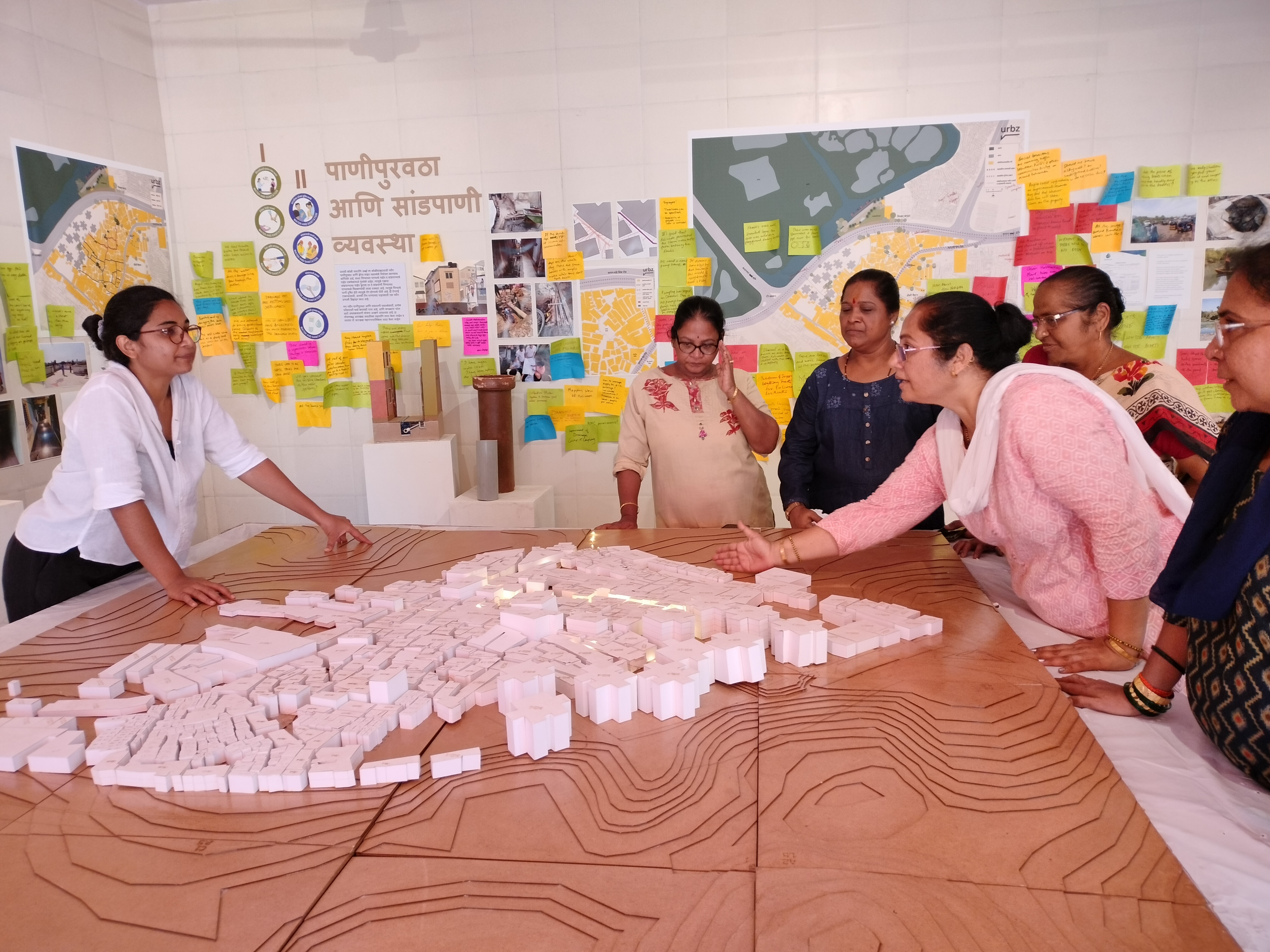A Colombian barrio in Venezuela: San Blas. Part I

A Colombian barrio in Venezuela: San Blas. Part I
It was Pedro and Richard’s parents, amongst many other who migrated from Colombia to the San Blas barrio, in South Petare in the outskirts of the city of Caracas. Yolanda Vegas remembers it happened right after they paved the streets in the year 1977, that San Blas received its first of many waves of migrants. According to official numbers, 16.419 Colombians migrated to Venezuela between the years 1970 and 1979. She remembers them as good, hard working people, who came to Venezuela looking for job opportunities they couldn’t find in their home country, reason being the Colombian economic crisis and widespread violence due to drug trafficking.
Between the year 1980 and 1999, 207.686 Colombians migrated to Venezuela. That’s when San Blas started to truly grow and was massively populated by Colombians, like Pedro and Richard’s parents who made a life for them in the streets of San Blas.
“People haven’t stopped coming to San Blas, there are still people arriving. Now all Colombians who had migrated here are moving back [to Colombia], they go back, earn some pesos and come back to their homes [in San Blas].”.-Yolanda Vegas, Neighbor of San Blas Barrio
It was during the government of Carlos Andrés Peréz in the year 1979, that their nationalization process began, it was Yolanda who looked out for them and made sure they all got their documents.
This is one of the many challenges Yolanda has faced as a recognized community leader in the San Blas barrio, since her arrival in the year 1957. She was only 4 when her family decided to move to San Blas.
“[...]We arrived in San Blas, because we used to live in a barrio in Los Palos Grandes, and in the year 1957 we had to leave this place due to a terrible earthquake, because Los Palos Grandes is a very dangerous place in terms of earthquakes. We came to San Blas with fear of what could happen to us if we stayed there. We arrived to a “ranchito” down the road in the área called El Chorrito […].”.-Yolandas Vegas, Neighbor of San Blas Barrio
As we stood in the “Cancha de Matapalo (The Matapalo basketball court)” she described what this place used to look like when she arrived, 53 years ago.
“When I arrived, this place where I’m standing was only dirt, yellow dirt, marshland and only wooden “ranchitos” stood. There were no services, no electricity, no running water, no sewage, there was nothing this was a slum, horrendous with dirt everywhere, it felt as if we were on a mountain, [...] a mountain with flattened areas where one could walk.[…]. To make it to Petare we rode an orange bus, [...] we had to pay a lot to get out of here and little by little this place got populated.”.-Yolanda Vegas, Neighbor of San Blas Barrio
Yolanda’s mom worked as a domestic helper in the home of a wealthy family in Caracas, it was through her tough work that she was able to feed her family and build her home brick by brick. In the early days, they lived in a wooden makeshift home, they got their water from a natural spring and attended to their daily needs in a septic tank.
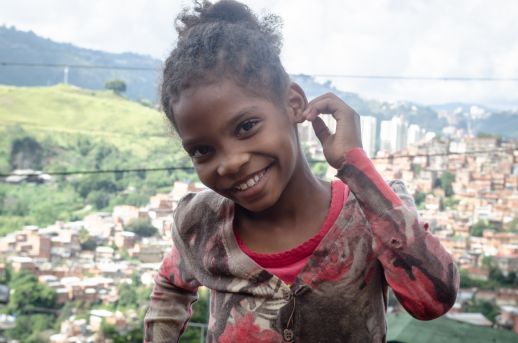
Yolanda’s mom worked as a domestic helper in the home of a wealthy family in Caracas, it was through her tough work that she was able to feed her family and build her home brick by brick. In the early days, they lived in a wooden makeshift home, they got their water from a natural spring and attended to their daily needs in a septic tank.
“I still remember that when it rained, the cerro (mountain) would slide, our bed would sink into the marshland, so we would move the bed, to make room for the water to pass [...].”.-Yolanda Vegas, Neighbor of San Blas Barrio
Despite the harsh conditions in which Yolanda lived during their early days in San Blas alongside her 9 brothers and sisters, she was able to go to school in the “Colegio Simón Bolívar” which still stands to this day.
Just as San Blas, the school has come a long way, today it’s a landmark in the San Blas barrio, standing tall in between the self built homes, a blue dot in the distance. She remembers back to when it was only a promenade of white bricks with a makeshift zinc roof, where cardboard held by rocks served as walls between classes and gaveras (plastic gridded boxes for soft drink transportation) as stools.
“We [San Blas] were only beginning, we didn’t have any other way to learn.”
The school taught only up to 6th grade, so when the time came, Yolanda was sent over to Puerto Ordaz, a city in the southeast of Venezuela to finish her studies.
If she behaved she was allowed to come back to San Blas during school breaks, but she admits being a trouble-maker from an early age, so her visits to Caracas were reduced to a minimum.
That was until she graduated and came back as fast as she could to her beloved San Blas where she studied to become a nurse, got married, raised 3 children, and then started working for the city hall.
“ I raised my children, fighting for my barrio, [...] I adore my San Blas, and even though some people do as they wish, I love my San Blas.”
She arrived back in San Blas to a cheap rental home alongside her husband in order to work in Caracas, as most people started out back in the day. San Blas had changed by then, there was now a market, the school had gone a long way, there was a basketball court and even a doctor’s office.
During her absence the first sewage line was installed, and the road was paved by the late 1970’s. Water pipelines were installed but were not concealed underground, so people would have to walk over these huge pipes. It was then that the community began to organize themselves and created the civic associations and neighborhood associations in order to propose improvement projects to the municipal council, a process led by Yolanda’s late mother.
The first of these projects was, of course, the concealing of water pipes and repavement of the streets of San Blas, it was the same neighbours who paved their streets with the support of the municipal council. Then came electricity, the closest standing electric post was in the Pomarrosa neighborhood, so little by little they lit the way from Pomarrosa to San Blas, until the municipal council finally built light posts and later installed meters in each home.
By the time Norys Corozco, one of Yolanda’s friends moved to San Blas in the early 1980’s all public services were functioning. Norys moved into a rental home in San Blas, her husband started a carpentry shop, and what initially was his workshop grew into the home they live in today. Waste management services started closely after Norys’ arrival. Yolanda remembers that they would knock on neighbors doors to take away their solid waste.
Norys has lived in the same home for the past 25 years, she says it’s still a work in progress. The one story home, houses Norys, her husband and her youngest son who is yet to be wed. It was only 7 years ago that they were able to change their zinc roof for a solid roof and they still hope to build a second story for their youngest son to move into with his future family.
Most homes in San Blas are built this way. With the home extending as fast as the family, resulting in 3 or even 4 story homes. What Yolanda describes as “pure anarchy” due to the inexistence of building regulations.
“These lands are unstable, they [neighbors] are all at risk. I feel so much stress everytime it rains, because I live down by the slope, if one of the houses from uptop slides it’s going to land on my home. A calamity could happen any of these days.”.-Yolanda Vegas, Neighbor of San Blas Barrio
Yolanda is well aware that the lands where San Blas and even Juventud Bolivariana stand were made up of landfill from the Palo Verde housing development. She still remembers the trucks driving up to San Blas to unload the soil that makes up the unstable grounds of what San Blas and Juventud Bolivarana are today.
“What happens is that when it rains, it all [the mountain] comes down, the plastic sheets you see on the mountain are meant to allow water to slide down but that doesn’t do anything to stop landslides. [...] The people in the lower houses have to take all that dirt out of their houses when the rain stops.”.-Yolanda Vegas, Neighbor of San Blas Barrio
Nevertheless, you still find people that insist on building even higher despite the imminent dangers. To this day, Yolanda has stopped numerous constructions of a fifth storey, most recently the establishment of a bar in the fifth storey of a home.
Added to the instability of land comes the instability of tenureship. While the neighbors of the Ciruelita barrio right next to San Blas did get their supplementary title (a document granted by a judge to justify the occupation of the land, granting the right to the surface to those who have selfbuilt on the land) and later their property title, San Blas’ neighbors were cut off from this benefit. During the bureaucratic process involving the delivery of all property titles to the 2000 families that make up San Blas community, an opposition government won the city hall, this first stalled and then completely shut down the process. Despite having completed the neighborhood census and carrying out protests, today the San Blas neighbors only have supplementary titles.
“San Blas’ most beautiful moment was when the streets got wider and this started to get populated and one felt like a queen [..], almost 40 years ago. And it kept getting better, that was until this government started, since they came into power there has only been disgrace in Venezuela, they would come over and cover everything with red [the PSUV party colors] .” .-Yolanda Vegas, Neighbor of San Blas Barrio
